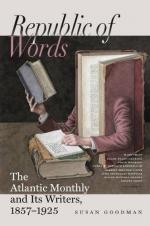Results of Heavy Ordnance. The 10-1/2-inch Armstrong gun sent a round 150-pound shot, with 50 pounds of powder, through a 5-1/2-inch solid plate and its 9-inch teak backing and 5/8-inch iron lining, at 200 yards, and one out of four shots with the same charge through the Warrior target, namely, a 4-1/2-inch solid plate, 18-inch backing, and 5/8-inch lining. The Horsfall 13-inch gun sent a round 270-pound shot, with 74 pounds of powder, entirely through the Warrior target at 200 yards, making an irregular hole about 2 feet in diameter. The same charge at 800 yards did not make a clean breach. The Whitworth shell burst in the backing of the same target has been referred to. Experiments on the effect of the 15-inch gun are now in progress. Its hollow 375-pound shot (3-inch walls) was broken without doing serious damage to 10-1/2-inch laminated armor backed with 18 inches of oak. The comparative test of solid and laminated armor has already been mentioned. The best 4-1/2-inch solid plates, well backed, are practically proof against the guns of English iron-clads, namely, 68-pounder smooth-bores and Armstrong 110-pounder rifles, the service charge of each being 16 pounds.
Rifling and Projectiles. The spherical shot, presenting a larger area to the action of the powder, for a given weight, than the elongated rifle-shot, has a higher initial velocity with a given charge; and all the power applied to it is converted into velocity, while a part of the power applied to the rifle-shot is employed in spinning it on its axis. But, as compared with the rifle-shot, at long ranges,




